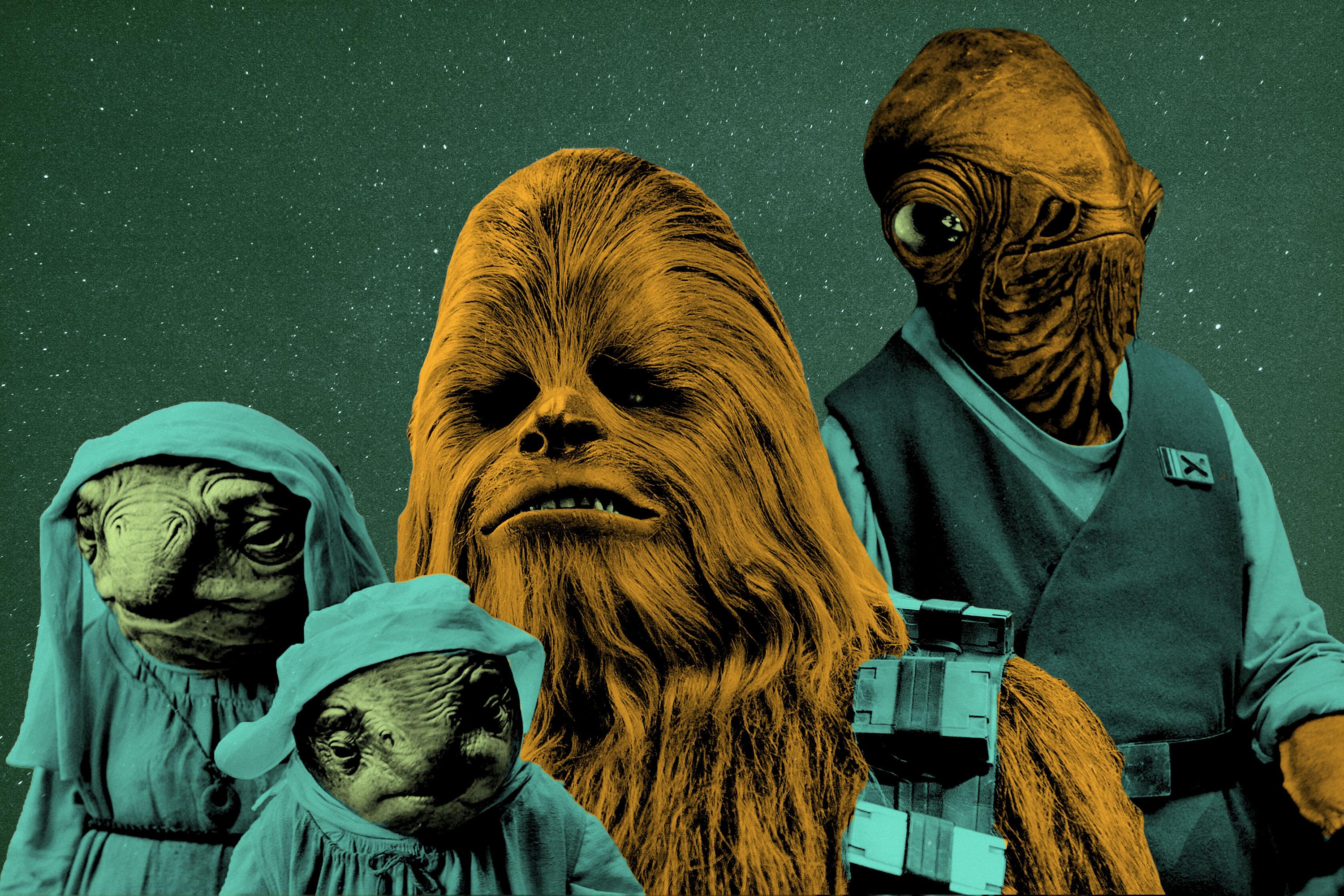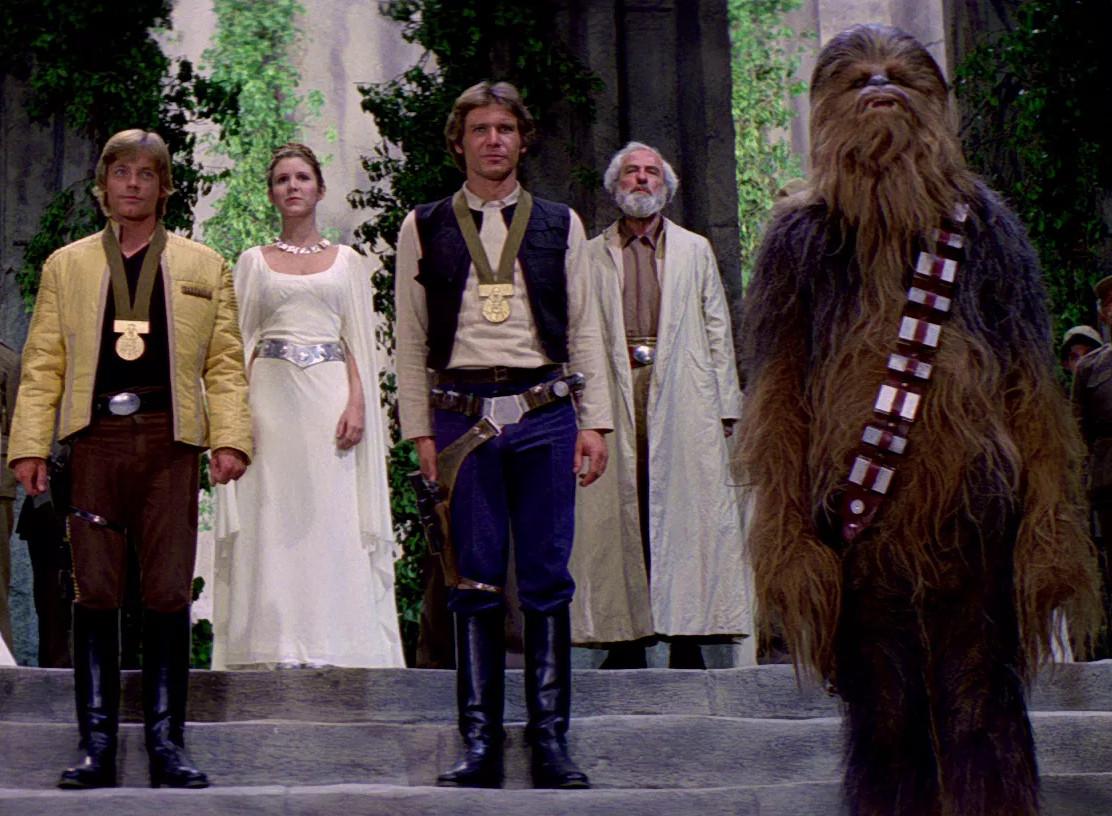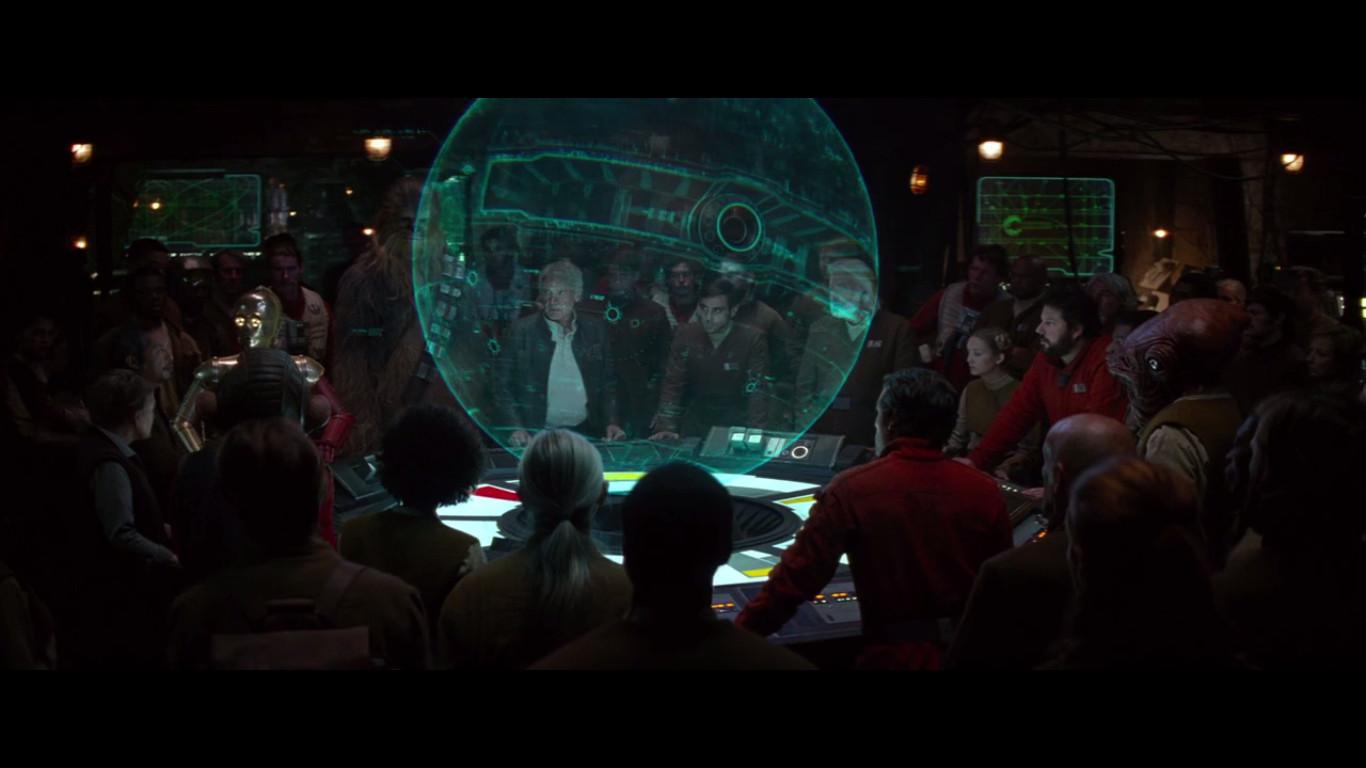
Forty years ago in our galaxy, and 30 years ago in one far, far away, an all-human crowd assembled to watch one non-human war hero get snubbed by his all-human superiors as his two human companions received medals for being no braver than him.
I wish I could say that this and other indignities of the era—such as the stereotyping of Jawas, overt objectification of Twi’leks, and inexcusable slurs about “Sand People” and “Hammerheads”—were products of an antiquated time; that as obviously inappropriate as those words and gestures were, the ensuing decades have made modern eyes and ears more sensitive.
Sadly, I have no such progress to report. In the years since that throne-room disgrace, regimes have risen and fallen, planet-sized superweapons have been built and destroyed, and bright-eyed and fresh-faced young Jedi have grown grumpy and gray, but one unfortunate fact hasn’t changed: Star Wars is still snubbing non-human species.

One would think that the denizens of a society in which the populations of countless planets have intermingled over millennia of interstellar travel would know enough to treat other species with respect. One would be wrong. Star Wars’ casting is much more inclusive than its characters, and its central ensemble’s diversity doesn’t extend past its starring species.
“Who are those things?” Rey asks when she first spots the nun-like Lanai, the tireless Caretakers of the Jedi temple/hostel on Ahch-To, in Star Wars: The Last Jedi. Maybe Rey’s first lesson from Luke should have been about treating sentient beings with respect instead of referring to them as inanimate objects. Or maybe it should’ve been about not nearly hitting them with inanimate objects; having failed to hurt the Lanai with words, Rey soon inadvertently switches to sticks and stones. A flubbed lightsaber training exercise a little later in her study abroad sends a rock tumbling toward two climbing Caretakers, smashing their cart and nearly ending their seemingly thankless lives. The scene is supposed to play for laughs: Those Jedi and their high jinks. But the Caretakers did come close to dying! At the end of the movie, Rey moves a mountain of boulders to rescue her human buddies. But when the Lanai’s lives are at stake, gravity takes its course.
Rey doesn’t even apologize to the Caretakers for the close call, unless shooting a blaster bolt through the wall of her hut and creating a hole that they had to repair was her way of saying sorry in advance. It’s not clear what the Caretakers are getting out of this “you insult and endanger us, we clean up your messes for free” arrangement that they’ve evidently adhered to for ages, but they would probably be better off if Luke really were the last Jedi. We may never know what motivates them; naturally, the only scene that explained something about Caretaker culture was cut from the film.
If Rey were the only core character in the new movies to use dehuman(oid)izing language to refer to other thinking, feeling beings, we might excuse her slipup as an isolated event attributable to youth or an insular upbringing. But when Finn first meets Chewbacca, he others the Wookie in just the same way:
In Finn’s defense, he was raised from childhood by the First Order, which has kept up the Empire’s humans-first policies despite being Supremely Led by a non-human. (Let’s leave aside the absurdity of the galaxy having enough humans for a government that spans countless systems to be humanocentric and xenophobic in the first place.) Finn’s “You can understand that thing?” query probably passes for polite at Stormtrooper school, especially if Captain Phasma oversees sensitivity training. Even so, this is some speciesist bullshit. Sorry, Rose: Rey and Finn are made for each other.
At least “that thing” is better than Leia’s “this walking carpet.” (No wonder no one bought her line about being on a “diplomatic mission.”) But even aside from Finn’s callous question—which must have been traumatic for a Wookie who once was enslaved by the Empire—Chewie is having a hard trilogy. When he’s wounded in the line of duty in The Force Awakens, he has to deal with a condescending doctor who all but asks if she can kiss his boo-boo.
When Leia loses Han, does she commiserate with the one person who’s experiencing the same sadness? Nope; too hairy to hug, I guess. Instead, she blows right by Chewie to embrace Rey, whom she’s never met and who hardly knew Han. (She does, at least, give him a make-up hug at the end of The Last Jedi.)
And on Ahch-To, Luke is less happy to see Chewie than he is to see his old droid, R2-D2. (In Star Wars, droids steal all of the non-human screen time.) Granted, Chewie broke down Luke’s door—add it to the Caretakers’ to-do list—but it still would have been nice for the hermit to make more of a fuss over his old pal before asking, “Where’s Han?” Chewie is about to be the last living link to the original trilogy, yet he’s still on the sidelines. On Ahch-To, he spends most of his time in the company of porgs, shunned by his human companions and, as usual, left untranslated to us. What does a 230-year-old warrior who’s commanded armies, liberated his planet, and left his family for the Resistance’s sake have to do to get some subtitles or an assist from C-3PO?
It’s not as if 3PO has much more interpreting to do with the human-dominated Resistance than he would with the First Order. If the Resistance is having a hard time swelling its ranks, maybe it should try recruiting more from outside a single species. As it is, the attendees at Resistance briefings are about as diverse as the crowd surrounding Donald Trump at an executive-order signing. It’s a big galaxy, guys.

The most prominent non-humans in the Resistance are either holdovers from the original trilogy or excuses to slip in a Beastie Boys reference. The former group gets it worst of all: Admiral Ackbar, who comes out of retirement to put himself in harm’s way, barely has lines in The Last Jedi, dying off screen with only the briefest acknowledgement of his loss—just like the Bothans whose sacrifice set up his greatest victory in The Return of the Jedi. And while another non-human hero of the Battle of Endor, Nien Nunb, survives, he’s still a fighter jockey after all these years. Somehow, Commander Poe Dameron outranks Lieutenant Commander Nunb—as in, the Nien Nunb who rescued Leia from Imperial captivity before Poe was born and copiloted the ship that blew up the second Death Star. At some point, he hit the Sullustan Ceiling while humans half his age climbed the ranks. At least the Resistance is slightly more species-diverse than the strike team in Rogue One, which sent exactly one non-human to its assault on Scarif.
Most of the non-humans we meet in The Last Jedi (including another walking, talking Beastie Boys reference) live on Canto Bight—home, we’re told, to the “worst people in the galaxy.” That could be a coincidence, but the series’ surface-level treatment of non-humans makes them easier to stigmatize. Only a holographic Maz Kanata cameo saves the movie’s non-human, non-droid characters from being background figures, sources of Jar Jar–esque slapstick humor, or—in the cases of Snoke and the abusive slave master who oppresses cute (human) kids—outright evil. And Star Wars doesn’t even do its “aliens” the honor of giving them non-derivative visual identities: Anatomically speaking, most species in Star Wars are either human-shaped or modeled on some non-human Earth species: space monkeys, space pigs, space squid, and so on.
Where’s Star Wars’ linguistic equivalent of Klingon, Quenya, and Sindarin? Where are the well-drawn “alien” cultures and creeds? Where are the scenes that could satisfy a non-human Bechdel test? Under Disney, the series may have made major strides in on-screen representation. But Star Wars is still only human.

